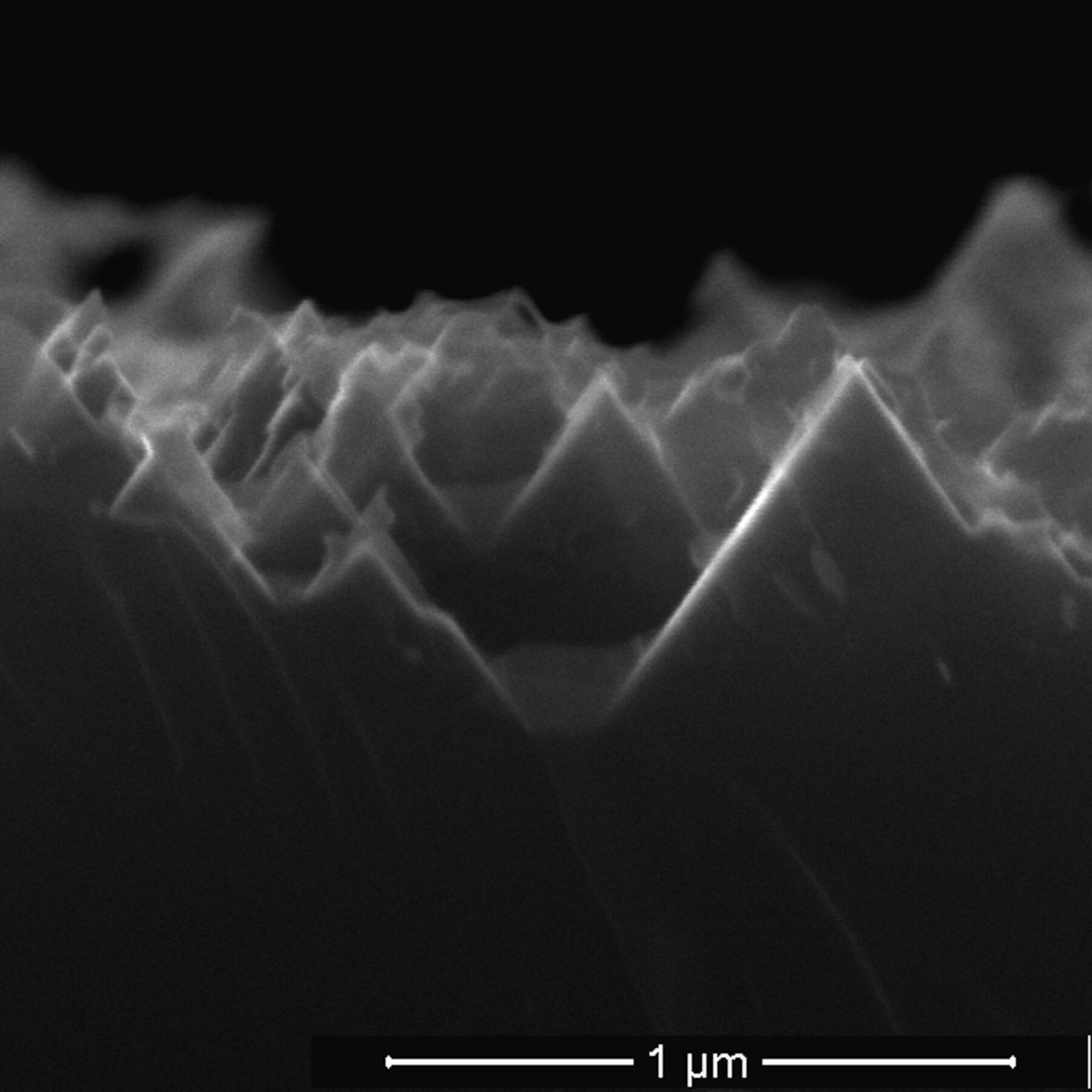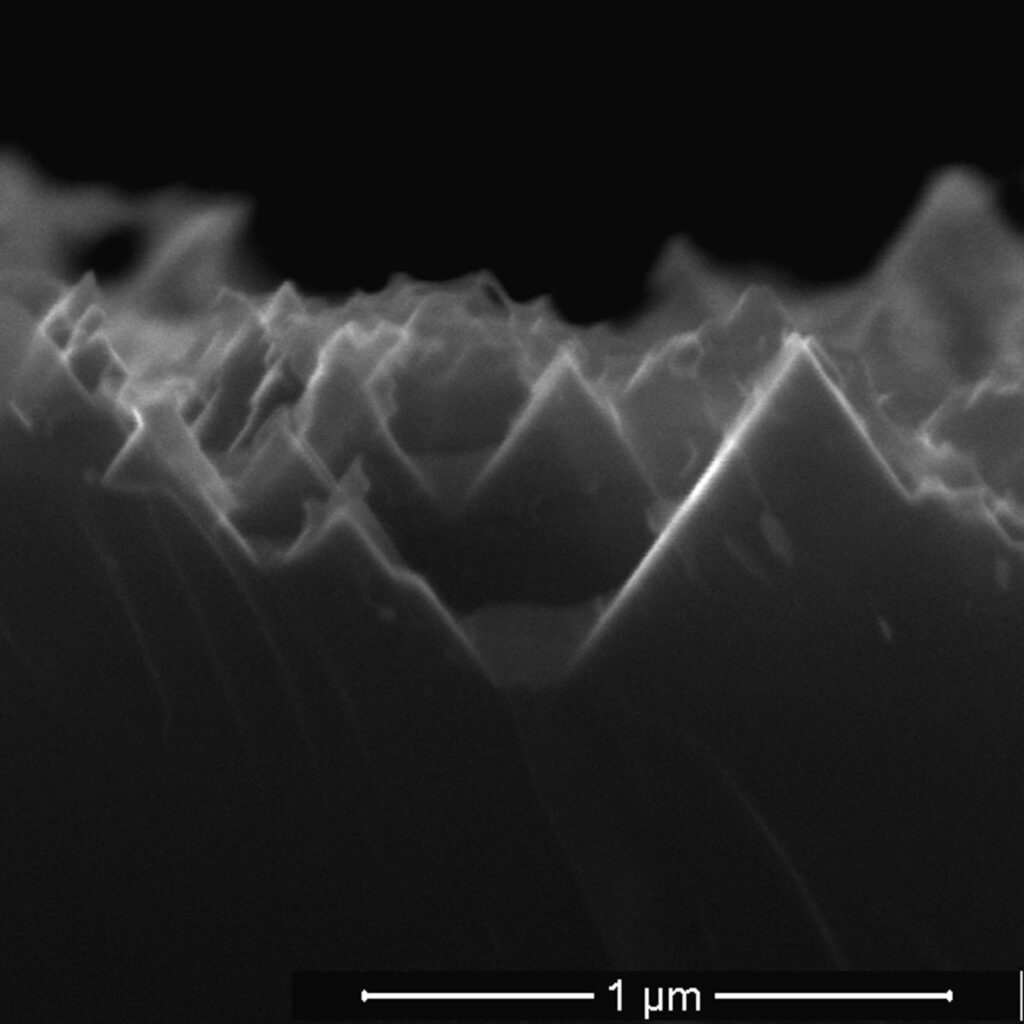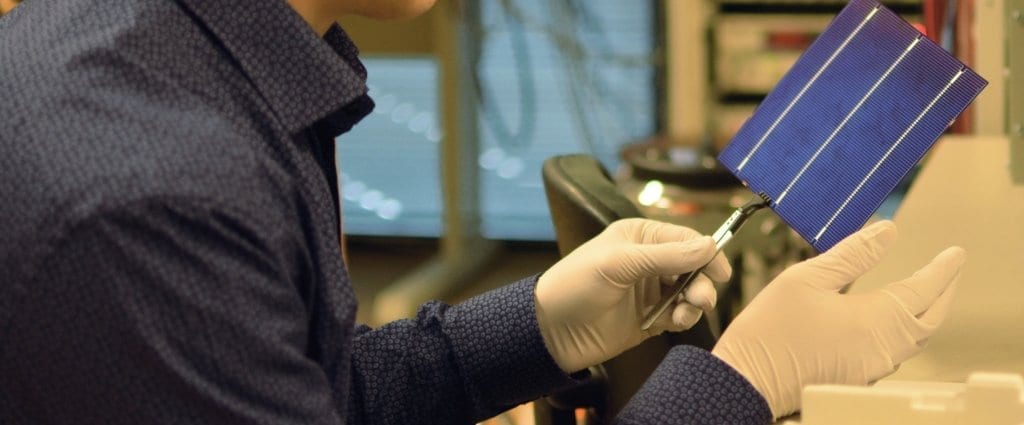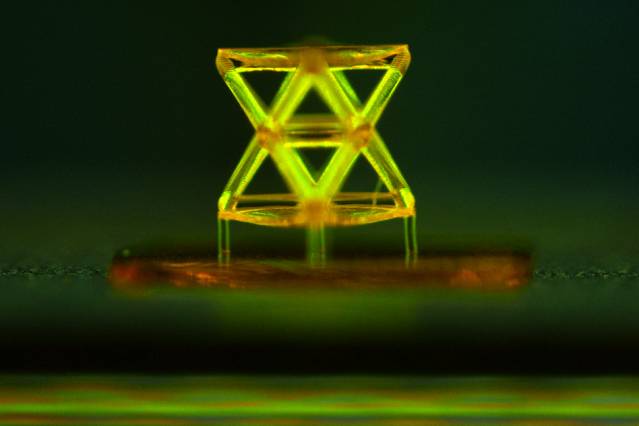Rice University scientists have created a one-step process for producing highly efficient materials that let the maximum amount of sunlight reach a solar cell.
The Rice lab of chemist Andrew Barron found a simple way to etch nanoscale spikes into silicon that allows more than 99 percent of sunlight to reach the cells’ active elements, where it can be turned into electricity.
The research by Barron and Rice graduate student and lead author Yen-Tien Lu appears in the Royal Society of Chemistry’s Journal of Materials Chemistry A.
The more light absorbed by a solar panel’s active elements, the more power it will produce. But the light has to get there. Coatings in current use that protect the active elements let most light pass but reflect some as well. Various strategies have cut reflectance down to about 6 percent, Barron said, but the anti-reflection is limited to a specific range of light, incident angle and wavelength.
Enter black silicon, so named because it reflects almost no light. Black silicon is simply silicon with a highly textured surface of nanoscale spikes or pores that are smaller than the wavelength of light. The texture allows the efficient collection of light from any angle — from sunrise to sunset.
Read more . . .
The Latest on: Solar-cell efficiency
[google_news title=”” keyword=”Solar-cell efficiency” num_posts=”10″ blurb_length=”0″ show_thumb=”left”]
via Google News
The Latest on: Solar-cell efficiency
- Researchers outline path forward for tandem solar cellson April 26, 2024 at 7:22 am
As the old saying goes, two heads are better than one. The same is true when it comes to solar cells working in tandem. Researchers at the U.S. Department of Energy's National Renewable Energy ...
- A look at freshwater usage in solar manufacturingon April 26, 2024 at 4:00 am
With solar power becoming more economical, quick to deploy and zero-emissions, it’s quickly emerged as a winner in the energy transition. As a result, ...
- Scientists develop material with potential to revolutionize solar panel efficency: 'Significant leap forward'on April 26, 2024 at 3:15 am
Researchers at Lehigh University have developed a solar panel that is nearly twice as efficient as most existing solar panels, using something called "quantum material." External quantum efficiency ...
- Born in the USA: First silicon solar cell celebrates 70th birthdayon April 25, 2024 at 11:02 am
U.S. researchers presented the first prototype of a usable solar module. The efficiency at that time was around 6%. A lot has happened since then.
- Engineers uncover key to efficient and stable organic solar cellson April 25, 2024 at 7:56 am
A team of researchers led by Professor Philip C.Y. Chow from the Department of Mechanical Engineering at the University of Hong Kong (HKU) has made a significant breakthrough in the field of organic ...
- Key to efficient and stable organic solar cellson April 24, 2024 at 5:00 pm
Their research, titled "The role of interfacial donor-acceptor percolation in efficient and stable all-polymer solar cells," paves the way for more sustainable and viable solar energy solutions for ...
- A shade closer to more efficient organic photovoltaicson April 24, 2024 at 10:00 am
Transparent solar cells will transform the look of infrastructure by enabling many more surfaces to become solar panels. Now, materials called non-fullerene acceptors that can intrinsically generate ...
- NREL updates interactive chart of solar cell efficiencyon April 23, 2024 at 9:41 pm
The US National Renewable Energy Laboratory (NREL) has updated its research cell efficiency chart for a range of PV technologies.
- Researchers develop ‘half-tandem’ perovskite solar cells with conversion efficiency of 27.63%on April 19, 2024 at 2:53 am
Khajeh Nasir Toosi University of Technology reserachers have developed ‘half-tandem’ solar cells with a power conversion efficiency of 27.63% ...
- Four-terminal tandem organic solar cell achieves 16.94% efficiencyon April 16, 2024 at 5:01 pm
A team of researchers from Spanish research center ICFO has fabricated a four-terminal organic solar cell featuring a tandem configuration with a power conversion efficiency of 16.94%. A four ...
via Bing News












